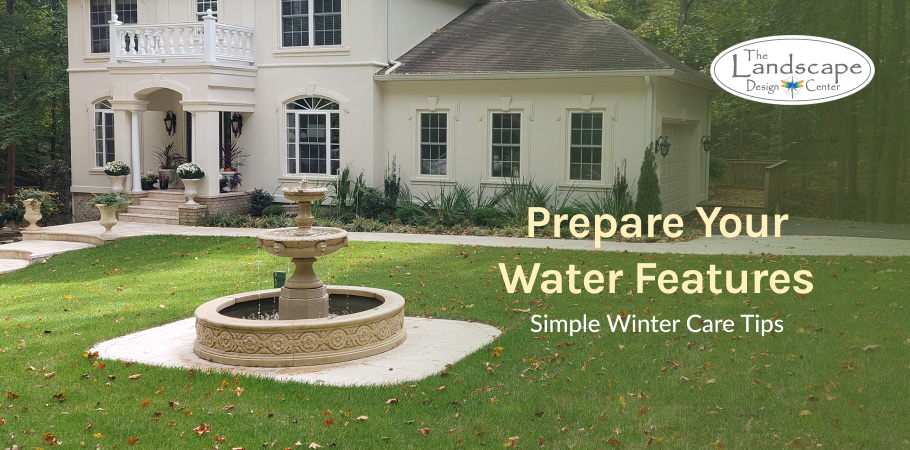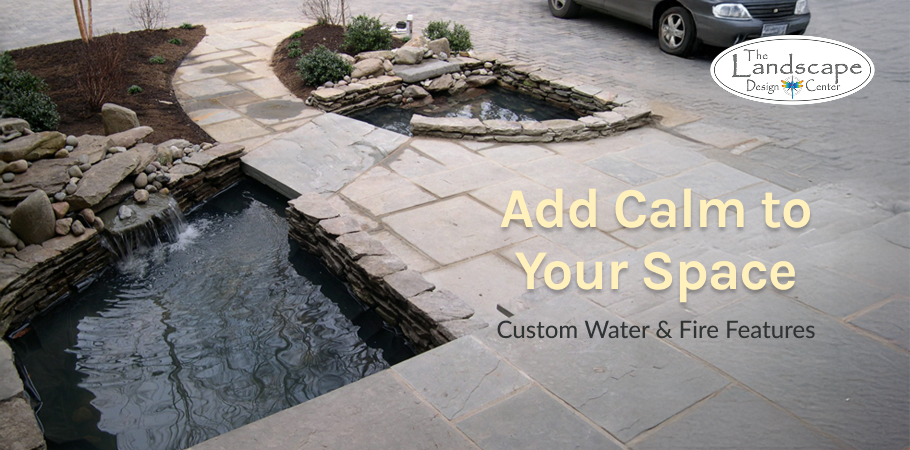
As the temperature begins to drop, your backyard oasis deserves a little extra care. Many homeowners invest time and creativity into water feature installations during the warmer months, but often overlook the importance of winter preparation. Neglecting these features before the cold sets in can lead to costly repairs, cracked surfaces, or damaged pumps once spring returns. A professional landscape contractor understands that a bit of maintenance now can save a great deal of trouble later.
From fountains and ponds to waterfalls and streams, every element of your landscape has unique needs. Preparing your water features for winter ensures they remain beautiful, functional, and ready to shine again when warmer weather arrives.
Why Winter Maintenance Matters
When water freezes, it expands. That simple fact causes some of the biggest problems for outdoor systems. Frozen water trapped inside pumps, pipes, or basins can cause materials that seemed indestructible in summer to crack.
Even a small amount of leftover moisture can create pressure within your system, damaging joints or liners. Proper maintenance prevents this and keeps your water features in good working condition for years to come. Preparing ahead of time is always easier and cheaper than repairing damage once winter has already arrived.
Start by Cleaning and Clearing
Before shutting anything down, start with a thorough cleaning. Fallen leaves, dirt, and algae can accumulate and harden during the colder months. If left unchecked, that residue becomes much harder to remove later and can even stain surfaces.
Gently scrub the structure using a mild, non-abrasive cleaner. Drain all the water from the system, ensuring that no moisture remains in the pipes or reservoirs. Once everything is clean and dry, it’s ready for the next steps in winter preparation.
Remove and Store the Pump
Your pump is the heart of your system. When water sits inside and freezes, the expanding ice can damage internal parts. Once the setup is drained, disconnect the pump and store it indoors. Ensure it’s dry before storing it away.
Label cords, tubing, and small accessories so you can easily reconnect everything when spring returns. A landscape contractor will often recommend storing all electrical components together in a dry, well-ventilated area, away from extreme cold or humidity.
Caring for Ponds and Aquatic Life
If your setup includes a pond with fish or plants, they’ll need some special care. Fish can survive winter outdoors if the water is deep enough, typically two feet or more, but they still need oxygen. A floating pond heater or de-icer can keep a small hole open in the ice, allowing gas exchange.
Trim away dead or dying vegetation and move delicate tropical plants indoors. Hardy species can stay submerged as long as they’re below the frost line. This small effort ensures that your water features stay balanced and ready to come alive again in spring.
Protect Statues and Decorative Elements
Many outdoor designs include stone or metal ornaments, bowls, and fountains. These decorative elements are vulnerable to cracks and surface damage from frost. After cleaning them, cover each one with a breathable tarp or waterproof material.
Avoid sealing too tightly; some air circulation helps prevent moisture buildup underneath. For intricate structures or heavy sculptures, specialized outdoor covers are best suited. These covers prevent corrosion and color fading through the harshest months.
Inspect and Clear Plumbing Lines
Before winter fully sets in, make sure all pipes and lines are free of water. Using an air compressor to blow out any remaining moisture is one of the most effective ways to protect your system.
Once you’re confident everything is dry, cap off open ends to keep debris and insects from getting inside. Outdoor water features that run continuously during summer often have hidden plumbing that’s easy to overlook; this is where a professional inspection can be valuable.
Operating Through Mild Winters
In areas with relatively mild winters, some homeowners prefer to keep smaller water features running. If you choose to do this, reduce water flow to prevent splashing and ice formation on surfaces.
Installing a small heater or de-icer can help keep water circulating gently. However, monitor your system closely. If an unexpected freeze is forecasted, it’s best to turn everything off temporarily to avoid sudden damage.
Don’t Ignore the Surrounding Landscape
Your system doesn’t stand alone; it’s part of your larger garden environment. Overhanging branches, fallen leaves, and compacted soil can affect how well your setup weathers the cold. Trim branches, rake nearby debris, and check drainage around the base so melted snow won’t flood or pool in unwanted spots.
Mulching nearby plant beds can help retain warmth and prevent soil erosion when snow begins to melt. Taking these steps helps maintain not just your water features, but the entire outdoor aesthetic you’ve worked hard to create.
Reawakening in Spring
Once the frost has passed, resist the urge to flip the switch immediately. Inspect everything carefully first. Look for small cracks, loose fittings, or wear in the liner. Slowly refill the basin and check for leaks before reinstalling the pump.
Let the system run on low for a few hours, ensuring the water flows smoothly and air bubbles are cleared. Once stable, you can enjoy the sound of flowing water again. A reliable landscape contractor can assist with testing and ensure all components are functioning perfectly.
Professional Support Makes a Difference
Winter care isn’t always complicated, but it does require patience and attention to detail. For larger or more complex installations, professional help can make all the difference.
A qualified expert not only prepares your system for the cold but also identifies weak points that may not be visible to the untrained eye. Their maintenance routines protect pumps, seals, and surfaces, keeping your water features looking new year after year.
Conclusion: Protect Today, Enjoy Tomorrow
A bit of preparation now saves you from stress later. Whether you have a grand backyard fountain or a small garden pond, taking care of it before winter ensures it stays in excellent condition.
Your water features add elegance and peace to your space. Treating them with the same care you give your home ensures they’ll continue to bring joy for many seasons ahead. And when in doubt, a trusted landscape contractor can help keep everything working exactly as it should.
Bring Tranquility Home with The Landscape Design Center

Transform your outdoor space into a peaceful retreat with expert water feature installations from The Landscape Design Center. Whether you envision a serene pond, a modern fountain, or a cascading waterfall, our team designs and builds custom solutions that blend beautifully with your landscape. Each feature is thoughtfully crafted to create harmony, movement, and natural charm right in your backyard.
As a trusted landscape contractor, we focus on both aesthetics and durability, ensuring your water features are built to last through every season. We proudly serve Bowie, Odenton, Annapolis, Severna Park, Pasadena, and the surrounding areas.
Ready to enhance your landscape? Contact us today to discuss your design ideas and schedule a consultation.
FAQs
1. How do I prepare my water feature installations for freezing temperatures?
Before winter arrives, drain the system completely to remove all water from pumps, pipes, and basins. Clean away debris, algae, and leaves, then store the pump indoors to prevent damage from freezing. Cover decorative elements to protect them from snow and ice buildup.
2. Should I turn off my water feature during the winter months?
Yes, in most climates, it’s best to turn off your water feature once temperatures consistently drop below freezing. Continuous operation can lead to ice buildup and potential damage. However, if you live in a milder area, consult a landscape contractor to determine if your system can safely run year-round.
3. Can fish survive in outdoor ponds during winter?
Fish can stay outdoors if the pond is deep enough, at least 18 to 24 inches, to prevent complete freezing. Use a pond heater or floating de-icer to maintain a small open area for oxygen exchange. Avoid breaking ice manually, as the shock can harm fish.
4. What’s the best way to protect my pump and plumbing during winter?
Remove the pump after draining the system and store it indoors. Blow out any remaining water in the pipes using compressed air. This prevents ice from forming and damaging the lines. Many homeowners hire a landscape contractor for this step to ensure every connection is safely winterized.
5. When should I restart my water feature installations in spring?
Wait until temperatures consistently stay above freezing. Inspect the system for cracks, leaks, or worn seals before refilling it. Reinstall the pump, clean the filters, and let the water circulate slowly to test for any issues. Starting gradually helps prevent pressure damage and ensures everything runs smoothly.



